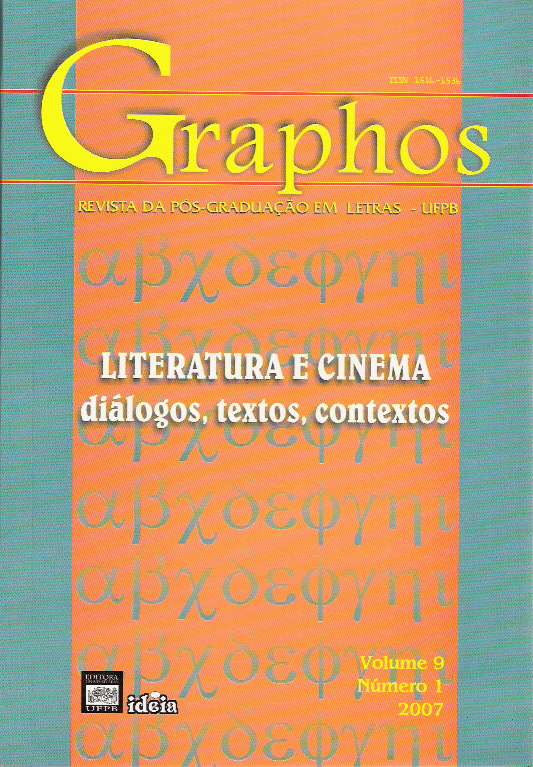The direct image of time and interstices: Jean-Luc Godard’s King Lear and the Celebration of European culture
Keywords:
adaptation, time-image, experimental film, intersticesAbstract
Taking into account concepts developed by Gilles Deleuze in The Time-Image, namely the direct image of time and interstices, this article anlyzes Jean-Luc Godard’s filmic adaptation of Shakespeare’s King Lear and argues that the resulting film, in spite of breaking up the narrative canon, is Eurocentric in its celebration of revered art works of Western culture.
Downloads
References
Primary source:
King Lear. Screenplay by Jean-Luc Godard. Dir. Jean-Luc Godard. Perf. Burgess Meredith, Peter
Sellars, Molly Ringwald, Woody Allen, Norman Mailer, Kate Mailer, Jean-Luc Godard. Cannon
Films, 1987. Videocassete. Xenon Video, unknown date.
Secondary sources:
BORDWELL, David. Narration in the Fiction Film. Madison: The University of Wisconsin Press, 1985.
DELEUZE, Gilles. Cinema 1, The Movement-Image. Trans.: Hugh Tomlinson, and Barbara Habberjam. Minneapolis: University of Minnesota Press, 1986.
___________. Cinema 2, The Time-Image. Trans.: Hugh Tomlinson, and Robert Galeta. London: The Athlone Press, 1989.
DINIZ, Thaïs Flores Nogueira. “King Lear’s Filmic Adaptation: A Chaos?” Canadian Review of Comparative Literature/Revue Canadiènne de Littérature Comparée (CRCL), 2E6, 23.3(1996):775- 780.
___________. Os Enleios de Lear: Da Semiótica à Tradução Cultural. Belo Horizonte: Faculdade de Letras da UFMG, 1994.
RODOWICK, D. N. Gilles Deleuze’s Time Machine. Durham &London: Duke University Press, 1997.
STERRITT, David. The Films of Jean-Luc Godard: Seeing the Invisible. Cambridge: Cambridge University Press, 1999.
____________ (ed.). Jean-Luc Godard: Interviews. Jackson: University Press of Mississippi, 1998.







